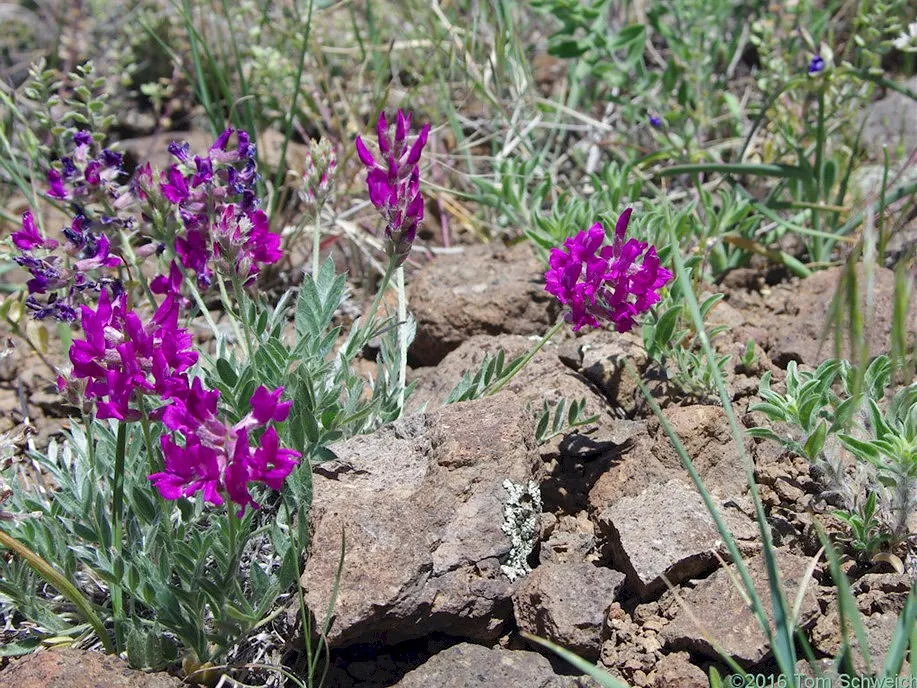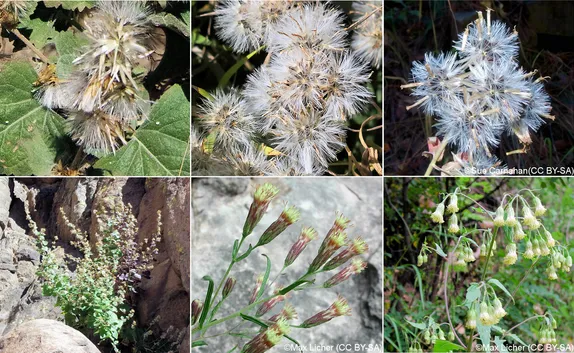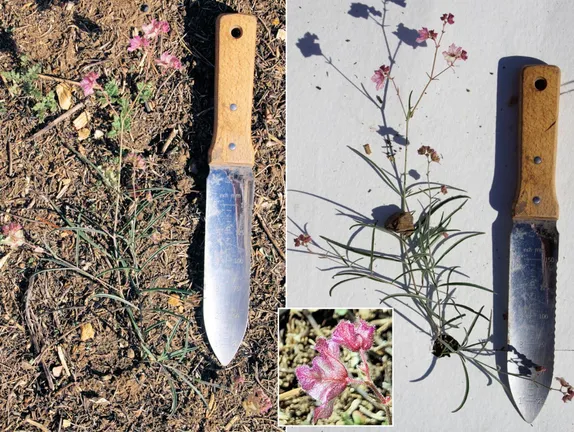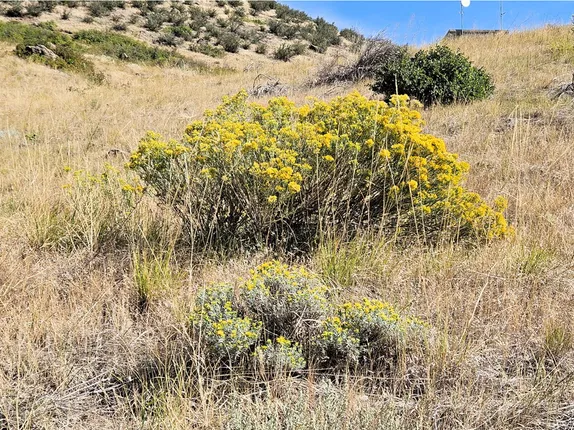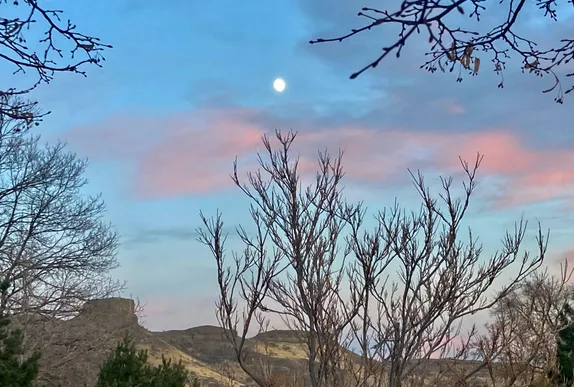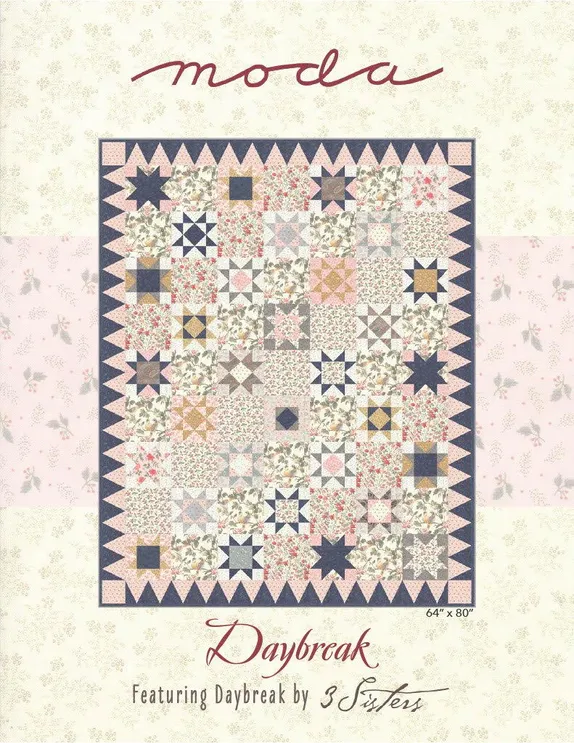By Tom Schweich
Oxytropis lambertii Pursh “Purple Locoweed” is a very common spring wildflower along trails and in Golden open spaces. The plant has compound silvery-hairy leaves at the base and one or more stalks with clusters of pea-shaped deep pink to purple flowers that later turn blue. The flowers become silvery-hairy seed pods called legumes. Some common names that wildflower books attribute to O. lambertii include "Colorado locoweed," "Lambert locoweed," "locoweed," "purple locoweed," "stemless locoweed," and "woolly locoweed."
Oxytropis and some Astragalus get their “Locoweed” name because they are toxic to cattle, sheep, horses, elk, and dogs. All plant parts contain Swainsonine, an indolizide alkaloid that inhibits an enzyme essential for normal sugar metabolism in cells, adversely affecting all body systems. It is currently thought that the Swainsonine is produced by a fungus that lives inside the plants rather than by the plants themselves.
Our plant is known from a published account by Frederick Pursh (1814) in his Flora Americae Septentrionalis or “North American Flora.” Pursh wrote that he saw the plant growing in the London, England, garden of Aylmer B. Lambert. Pursh resided at Lambert's estate while writing his Flora, and Pursh named the plant for his benefactor. The plants in Lambert's garden were grown from seed collected by John Bradbury in 1811 along the Missouri River. Bradbury was exploring America's newly acquired Louisiana Territory under the sponsorship of the Edinburgh, Scotland botanic garden. He returned to Scotland via New Orleans as the War of 1812 was brewing.
The first plant collection made in Golden was of Purple Locoweed. Edward L. Greene, an Episcopalian minister from Denver made the collection here on May 1, 1870. After years of plant study in Colorado, Greene moved to California where he became the first professor of botany at the University of California. Greene later moved east, and his collection of Purple Locoweed from Golden is now at Brown University.

